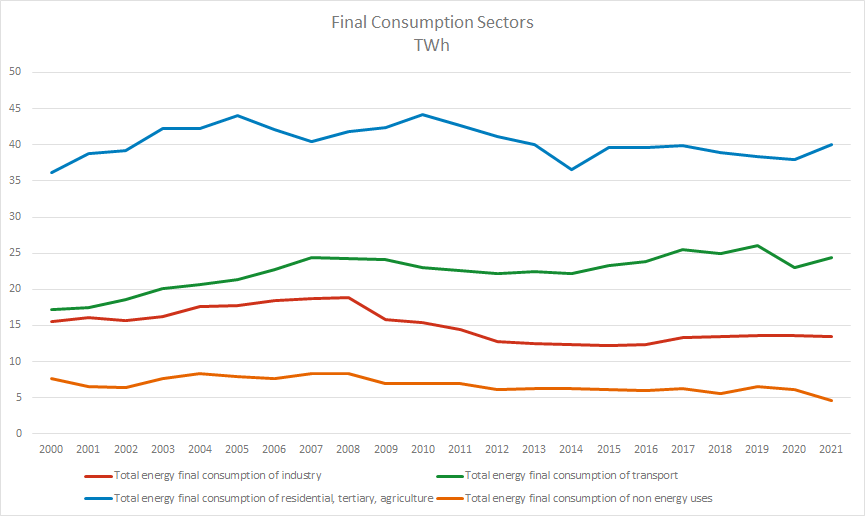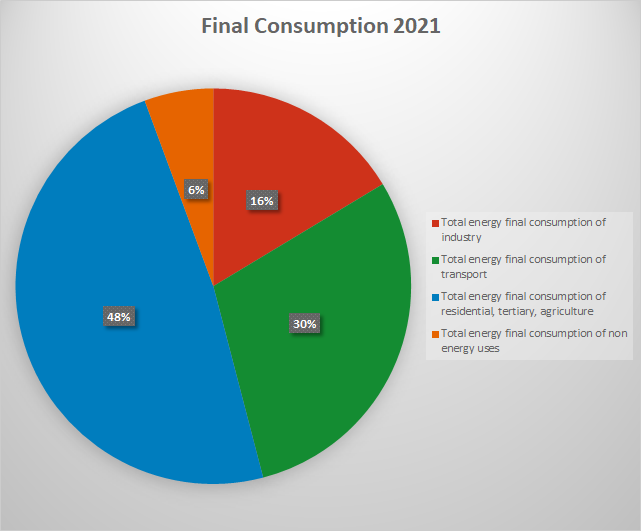Energy Demand
Over the period 2017–2019, energy consumption remained constant. 25% of the energy used is from renewable sources. The average power consumed per person is 2.1 toe, with roughly 3 900 kWh coming from electricity (2020). These numbers fall 27% short of EU averages. To 8.3 Mtoe, overall energy usage decreased by 4% in 2020. After a 2.8%/year increase between 2014 and 2017 due to the economic recovery, it remained steady between 2017 and 2019 at about 8.7 Mtoe. Previously, between 2007 and 2014, it fell by an average of 3.1% yearly. Oil made up 33% of total consumption in 2020 (down from 39% in 2010), followed by gas at 30%, biomass at 18%, hydropower at 6%, coal at 4%, wind at 2%, with the rest coming from imports, other renewables, and solar.
Final Consumption:
Despite a 4.5% decline to 7 Mtoe in 2021, final consumption has remained mostly steady since 2017. In the past, it had declined by 3.1% a year between 2008 and 2014 before rebounding until 2017 (+3.2% annually). With 37% of all final energy consumption, oil is the primary energy source for consumers, followed by gas (22%), electricity (19%), biomass (17%), heat (3%), and coal (2%). (2020). The largest energy consumer in 2021 will be the residential-tertiary sector (48%), followed by transportation (30%), industry (16%), and non-energy uses (6%).
The target of the National Renewable Energy Action Plan (NREAP, 2013) for a share of 20% of renewables in the final energy consumption in 2020 was largely exceeded (31% in 2020, including 54% for power, 37% for heating and cooling, and 6.6% for transport).
According to the NECP, the share of renewables in the final energy consumption should be raised to 36.4% in 2030 (63.8% for electricity, 36.6% for heating and cooling, and 13.2% in transport). It should reach 53-65% in 2050 (Energy Development Strategy, 2020).
Source: Enerdata
Last update: 07 2023



